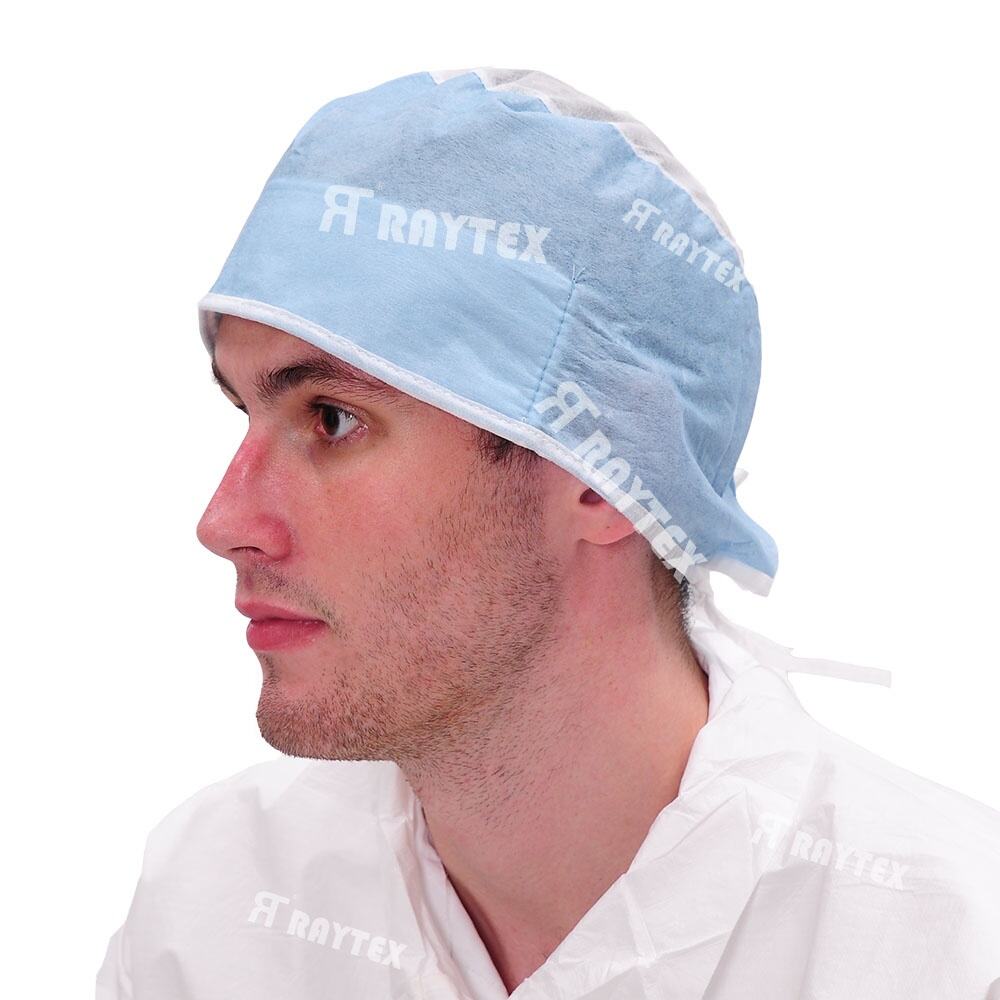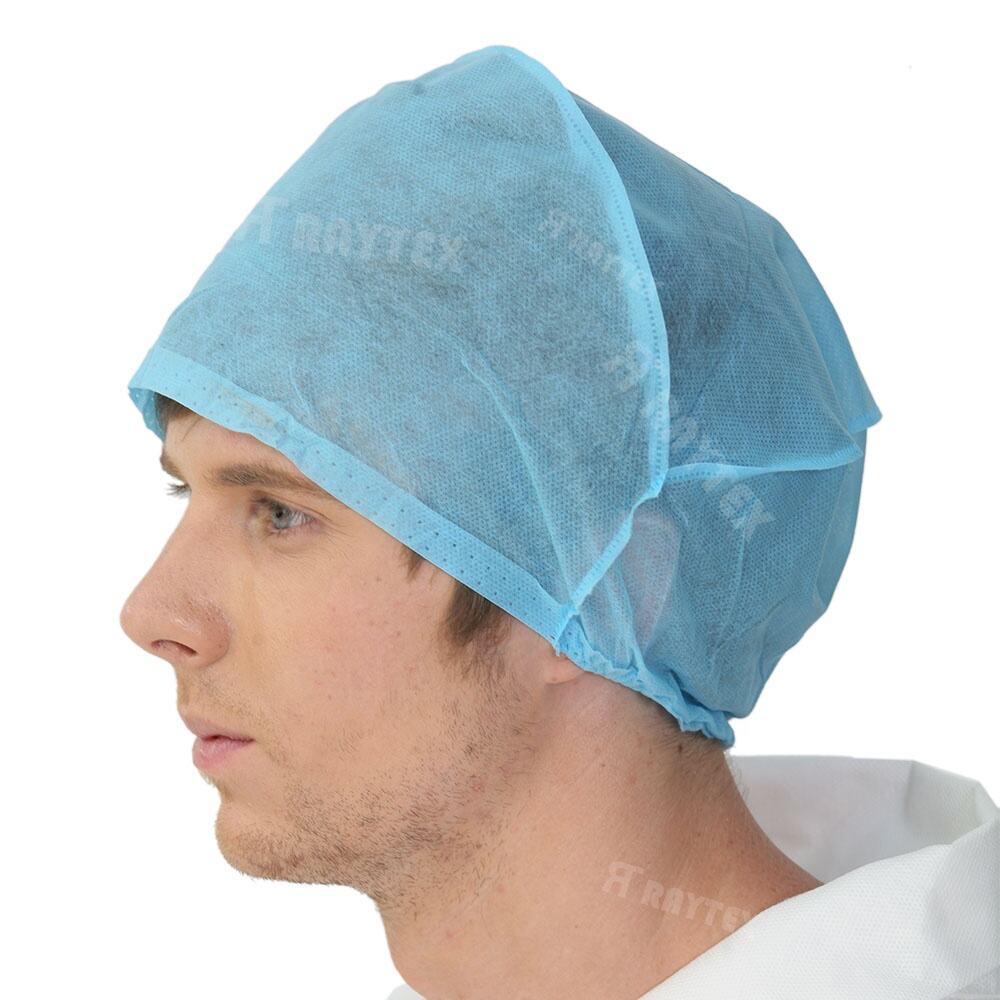کلاههای یکبار مصرف برای کارگران پستی که با مرسولات خطرناک بیولوژیکی سروکار دارند، لباسهای محافظتی تخصصی هستند که به منظور حفاظت از سر، مو و گردن در برابر قرار گرفتن در معرض خطرات بیولوژیکی مانند باکتریها، ویروسها، سموم و سایر مواد عفونیکنندهای که ممکن است در مرسولات آلوده وجود داشته باشند، طراحی شدهاند. این کلاهها یک جزء ضروری از تجهیزات حفاظت فردی (PPE) برای کارگران پستی محسوب میشوند که در معرض خطر قرار گرفتن در معرض مواد بیولوژیکی خطرناک در حین مرتبسازی، دستکاری و تحویل مرسولات، به ویژه در موارد بستههای مشکوک یا حوادث تأیید شده بیولوژیکی قرار دارند. این کلاهها از مواد سبکوزن و مقاوم در برابر مایعات مانند پلیپروپیلن SMS (اسپانبُند-مَلتبلون-اسپانبُند) یا پلیاتیلن ساخته شدهاند و یک مانع قابل اعتماد در برابر پاشش مایعات، ذرات معلق در هوا و مواد حاوی عوامل بیولوژیکی فراهم میکنند. این مواد به دلیل توانایی خود در مقاومت در برابر نفوذ مایعات بدنی، مواد شیمیایی و سایر مایعاتی که ممکن است حاوی پاتوژنها باشند انتخاب شدهاند، در حالی که به اندازه کافی تنفسپذیر هستند تا از دچار شدن به گرماگرفتگی در حین استفاده طولانی مدت جلوگیری کنند. ویژگیهای طراحی شامل طراحی پوشش کامل از سر، مو و گردن است، همراه با یک لبه الاستیکی در اطراف صورت که اطمینان از یک سیل کامل و جلوگیری از ایجاد شکافهایی که امکان نفوذ آلایندهها از آن وجود دارد را فراهم میکند. بسیاری از کلاهها به گونهای طراحی شدهاند که با سایر تجهیزات حفاظتی مانند عینکهای ایمنی، سپر صورت یا دستگاههای تنفسی استفاده شوند، به طوری که اندازه بازشودر صورت به گونهای است که این تجهیزات را بدون اینکه مانع از عملکرد حفاظتی کلاه شوند، در بر میگیرد. لبه الاستیکی اطراف صورت همچنین به ایجاد یک سیل بین کلاه و پوست کمک میکند و احتمال نفوذ هوا یا ذرات آلوده به داخل کلاه را کاهش میدهد. این کلاهها معمولاً یکبار مصرف هستند تا از خطر آلودگی متقاطع جلوگیری شود، چرا که استفاده مجدد از آنها در صورت عدم ضدعفونی مناسب میتواند منجر به گسترش پاتوژنها شود، که فرآیندی است که در محیطهای پستی شلوغ اغلب غیرعملی است. این کلاهها اغلب در بستهبندی استریل فردی عرضه میشوند تا اطمینان حاصل شود که قبل از استفاده از آلایندهها پاک هستند و همچنین به راحتی قابل استفاده و خارج کردن هستند تا تماس با سطوح آلوده را به حداقل برسانند. رعایت استانداردهای ایمنی بسیار مهم است و این کلاهها با مقرراتی مانند ASTM F1671 (روش آزمون استاندارد برای مقاومت مواد در برابر نفوذ پاتوژنهای خونی) و EN 14126 (لباسهای حفاظتی در برابر عوامل عفونی) هماهنگی دارند و این اطمینان را فراهم میکنند که حفاظت مؤثری در برابر خطرات بیولوژیکی ارائه دهند. همچنین این کلاهها از نظر تنفسپذیری، مقاومت در برابر پارگی و مقاومت در برابر مایعات آزمایش شدهاند تا اطمینان حاصل شود در شرایط واقعی به خوبی عمل میکنند. با تأمین کلاههای یکبار مصرف به کارگران پستی که با مرسولات بیولوژیکی سروکار دارند، کارفرمایان میتوانند از کارکنان خود در برابر قرار گرفتن در معرض پاتوژنهایی که ممکن است جانبهپا کننده باشند، محافظت کنند، از رعایت مقررات ایمنی شغلی مانند استاندارد پاتوژنهای خونی سازمان OSHA (29 CFR 1910.1030) اطمینان حاصل کنند و خطر شیوع بیماریها یا حوادث بیولوژیکی در محل کار را به حداقل برسانند و در نهایت یک محیط کاری ایمن و مطمئن حفظ کنند.


